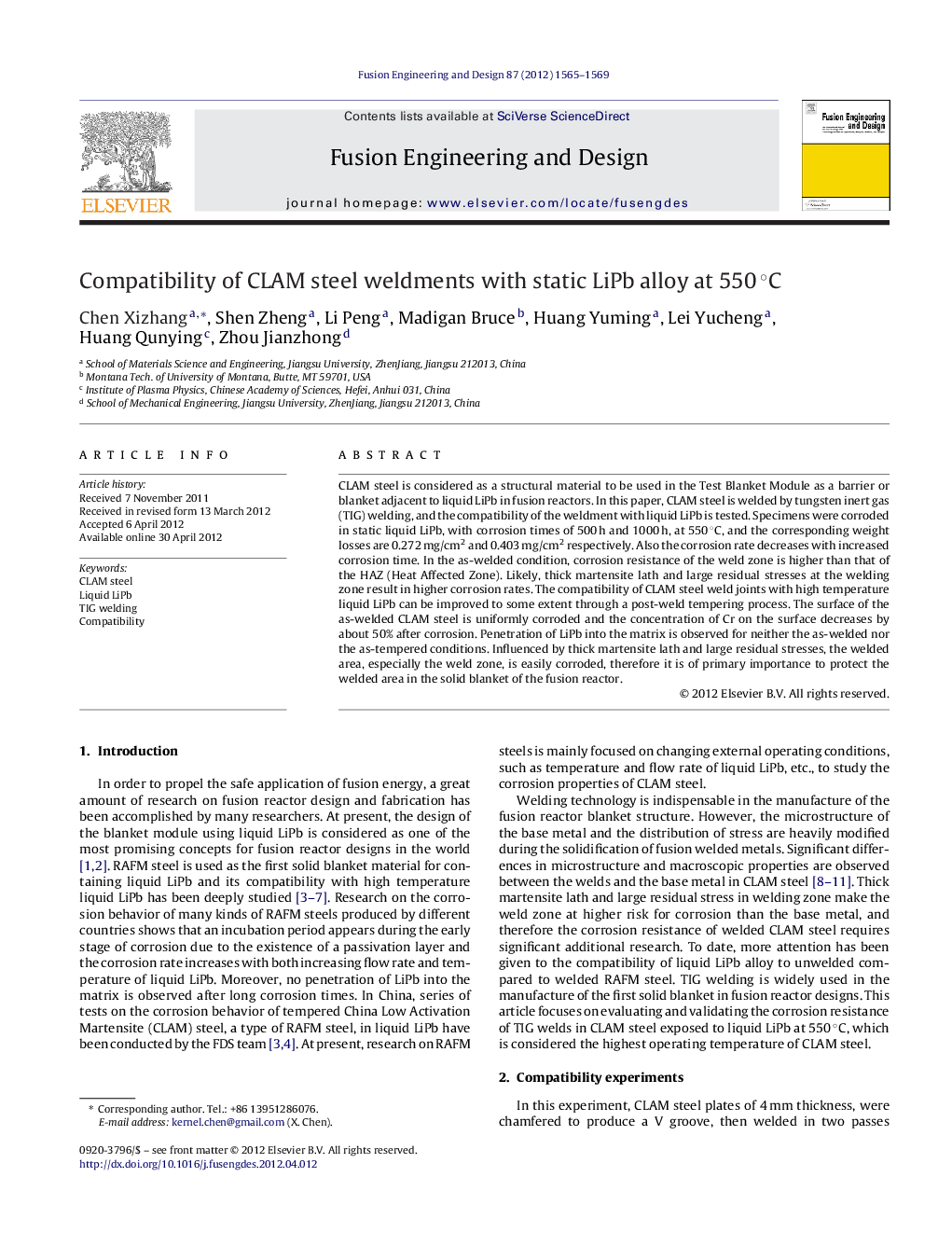| کد مقاله | کد نشریه | سال انتشار | مقاله انگلیسی | نسخه تمام متن |
|---|---|---|---|---|
| 272154 | 505014 | 2012 | 5 صفحه PDF | دانلود رایگان |

CLAM steel is considered as a structural material to be used in the Test Blanket Module as a barrier or blanket adjacent to liquid LiPb in fusion reactors. In this paper, CLAM steel is welded by tungsten inert gas (TIG) welding, and the compatibility of the weldment with liquid LiPb is tested. Specimens were corroded in static liquid LiPb, with corrosion times of 500 h and 1000 h, at 550 °C, and the corresponding weight losses are 0.272 mg/cm2 and 0.403 mg/cm2 respectively. Also the corrosion rate decreases with increased corrosion time. In the as-welded condition, corrosion resistance of the weld zone is higher than that of the HAZ (Heat Affected Zone). Likely, thick martensite lath and large residual stresses at the welding zone result in higher corrosion rates. The compatibility of CLAM steel weld joints with high temperature liquid LiPb can be improved to some extent through a post-weld tempering process. The surface of the as-welded CLAM steel is uniformly corroded and the concentration of Cr on the surface decreases by about 50% after corrosion. Penetration of LiPb into the matrix is observed for neither the as-welded nor the as-tempered conditions. Influenced by thick martensite lath and large residual stresses, the welded area, especially the weld zone, is easily corroded, therefore it is of primary importance to protect the welded area in the solid blanket of the fusion reactor.
► Corrosion extent of weld zone is higher than that of HAZ.
► Thick martensite lath and large residual stress lead to higher corrosion rate.
► Cr on the surface of weld zone decreases by about 50%, W increases slightly.
► After 500 h and 1000 h of corrosion, weight losses are 0.272 mg/cm2 and 0.403 mg/cm2.
► With the increasing of corrosion time, the corrosion rate decreases significantly.
Journal: Fusion Engineering and Design - Volume 87, Issue 9, September 2012, Pages 1565–1569